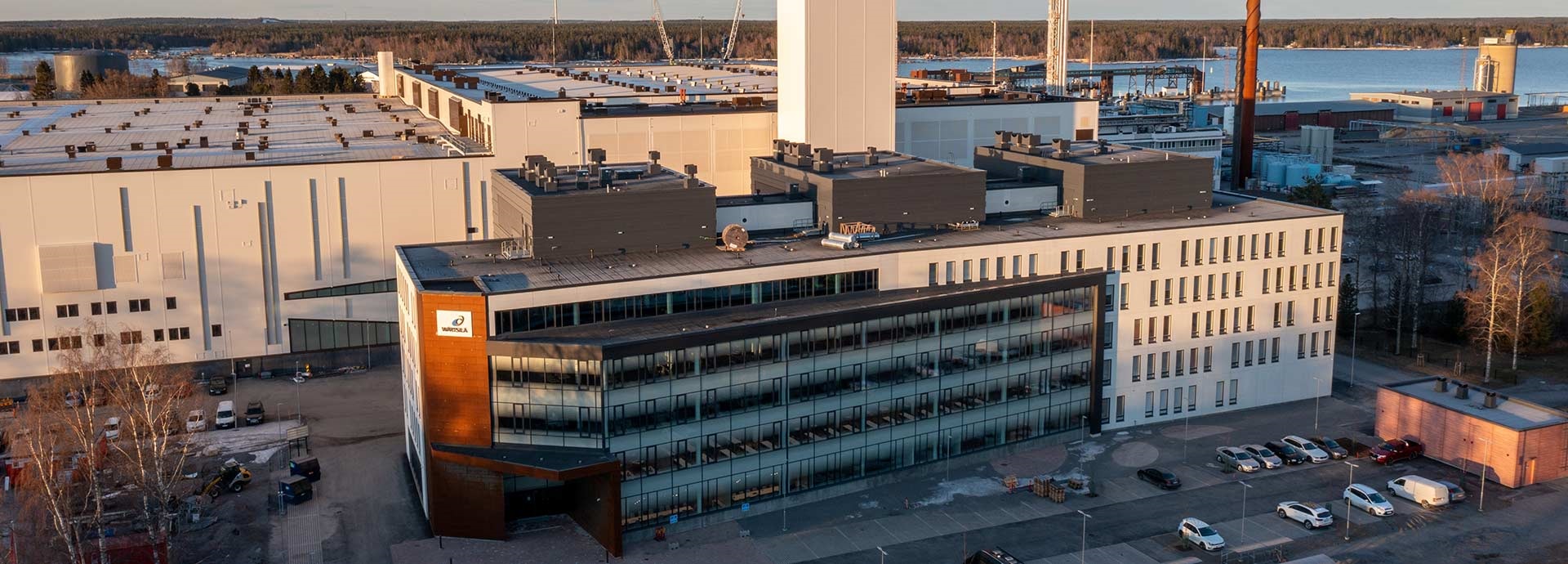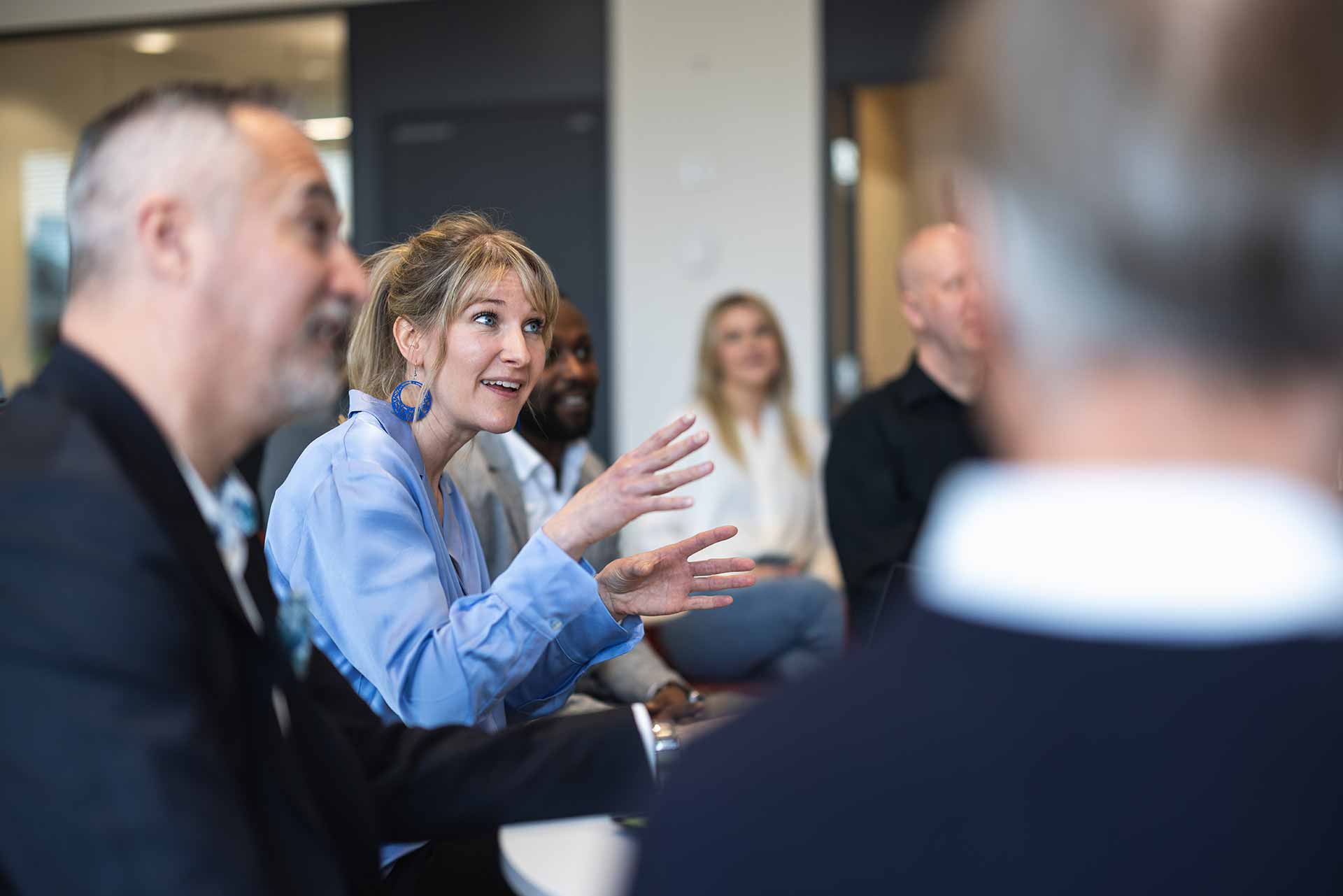

Wärtsilä has launched its Sustainable Technology Hub (STH) in Vaasa, Finland, in June. In addition to being the place for engine manufacturing, the hub promises to be an exciting ecosystem for cocreation. At the heart of the STH is the Partner
Campus, which has already proved to be a hotbed for winning innovations. With the STH now ready, Wärtsilä’s marine and energy sectors expect to see a new surge in sustainable solutions.
The Sustainable Technology Hub works both locally and globally. The hub has been designed from the ground up to nurture fresh ideas created between Wärtsilä and its customers, universities, and start-ups, explains Eleonor Hedström,
Director of the Next Business Lab at Wärtsilä Energy, who has worked with innovation at Wärtsilä for 17 years.
“A major part of what we’re doing at the STH is the Partner Campus, where new ideas are innovated, tested, and validated on daily basis,” says Hedström. “We now have all of our labs in one location in Finland and we want to
make the most of it through collaboration. The Partner Campus is more than just a physical setting; it’s about being a model and showcase for the cocreation of new business solutions.”
A campus for creativity
The Partner Campus is already active with various companies, some working on specific short-term projects, others there for the long haul. “It doesn’t matter how long a company stays on the campus; every company can have access to Wärtsilä
facilities and expertise. This enables things like performing tests together with the experts in our labs quickly but safely.”
One of the best features of the facilities – and the network itself – is that it offers companies the opportunity to conduct testing and run projects that wouldn’t otherwise be possible.
At Wärtsilä, we understand the value of collaboration from the perspective of nurturing innovation.
Introducing: ProtoZones!
While campus partners of course have access to practical office space and facility support services such as the cafeteria, the real crown jewel is the area known as ‘ProtoZones’. “On the ground floor, we have separate ProtoZone rooms
with various equipment for start-ups and partners to use. So a place which we jokingly also call as “garage”, Hedström adds with a smile.X
In the ProtoZone, partners can run project-specific tests with different actors and minimise interruption in production or test cell activities. The range of possible activities is broad, from proof-of-concept verification and hands-on training to ecosystem-wide
demos and minimum viable product testing. All the while, there’s great access to design, material, fuel, component expertise and additive manufacturing, among other things.
“At Wärtsilä, we understand the value of collaboration from the perspective of nurturing innovation,” says Hedström. “For the ProtoZone, we wanted to make it as practical as possible, allowing for all kinds of experiments.”

Catch the carbon
One recent success story from the campus is the innovative Direct Air Capture unit being installed by Soletair Power in Spring 2022. The purpose of the unit is to enable cleaner air for
Wärtsilä employees by returning indoor carbon dioxide levels to those of prehistory. “By installing a Direct Air Capture unit in our ventilation system, it’s possible to take carbon dioxide out of the air, store it and use it
in some way further down the road,” says Hedström.
Petri Laakso, CEO of Soletair Power, calls the undertaking “a really unique opportunity” for the company. “This way, we have access to a safe environment in which to validate solutions together with some of the best engineers around,
as well as truly showcase what we can do,” he says.
This project gives Soletair Power the opportunity to showcase its offering to the entire STH ecosystem, which extends far beyond Vaasa, or even Finland. Once the STH is running at full power, it will see 20-50 visitors every day, so word of innovation
is likely to spread quickly.
Reinventing fuel
Another example comes from the Fuel Lab, where Wärtsilä and Campus Partners are testing the fuels of the future, zeroing in on the solutions that could improve such qualities as fuel characteristics. “The Fuel Lab features outstanding
equipment and Wärtsilä obviously has a lot of know-how in the area,” says Hedström.
One of Wärtsilä’s key partners in the arena of future fuels is Nordic energy group St1. Together, the two companies have already conducted several Power-to-X feasibility studies.
“St1 also participated in the very first collaboration project that validated the Partner Campus concept,” says Hedström.
Riitta Silvennoinen, Head of Energy Transition at St1, is happy to see the Partner Campus “come to life” and is excited to explore every opportunity at the Campus. “The need for collaboration is increasing,” she says. “We
need to come together in the fuel value chain to provide the future solutions for our customers.”
Hedström agrees. “Whether we’re talking about local or global innovations, it’s clear that we can’t do everything by ourselves,” she says. “The Campus gives us a platform to keep learning together.”
Did you like this? Subscribe to Insights updates!
Once every six weeks, you will get the top picks – the latest and the greatest pieces – from this Insights channel by email.


